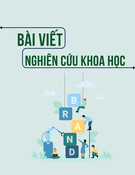
© 2003 The Abraham Group, Inc.
China Speech Notes
03.29.2003
The Role of Brand
In Your Business
By Jay Abraham

China Speech Notes
03.29.2003
2
[Jay’s Note: On March 29th, 2003, I delivered a 6 hour “speech” to large association of
fashion apparel manufacturers in Beijing China. These are the notes of my talk,
reformatted for you so that they are much easier to follow.
The core of the speech centered around building, maintaining and sustaining a brand.
But I think you’ll see that building a sustainable brand also has a definitively strategic
foundation. I hope that idea is powerfully conveyed. I know for sure the wonderful folks
in China understood it and appreciated it. – Jay]
First of all, let’s talk about brand’s true role in your business success.
Whatever types of garments you make, there is always, not sometimes, but always
a unique selling proposition or USP associated with it. That unique selling proposition,
in many cases, is the basis on which you build your “brand.” Brands play a critical role
many business successes. In the garment business they could play the most significant
role or the most modest. Depending upon the strategic positioning you’ve decided to
take with your business or with divisions of it.
For example: If you are a manufacturer of a garment that is intended to be sold to
upscale buyers or people who want to associate with upscale buyers, you obviously want
to develop a brand that conveys exclusivity, hip, “class” and
qualitativeness/desireablility.
On the other hand, if you’re a garment manufacturer whose positioning is
producing generic garments for low-priced, high-volume retail chains or private label to
be repackaged under a retailer’s or distributor’s chain, you have a different goal.
The point is you must understand the proper role your brand can play in the
success of your business. If you are attempting to establish a proprietary positioning for
your company and brand in the consumer’s mind, meaning in the eyes of the end buyer at
the retail level, the more you can turn your product into a recognized and prized and
preferential brand, the more you will sell, the higher price you can get, the more loyal
your consumer buyer, the more profitable your product and business becomes. You’re
also creating brand asset wealth for the future, which we’ll talk about in a little while.
Understand also, if you’re going to build a brand, there are two kinds of brands.
There are the solid, respective, qualitative, distinctive brands, which represents the bulk
of the products out there. Then there are the fiercely fanatical loyalist brands where
people would kill to be able to own those brands. Those are literally the brands they want
to own. They are the most prized, the most respected, the most impressive, the most
highly sought.
Normally, to sell more product, you either price low and become a generic or you
price high and you become a brand. If you’re going to price high to become a brand,

China Speech Notes
03.29.2003
3
you’ve got to be able to inspire tremendous brand enthusiasm from every element of the
buying continuum, meaning you’ve got to get the retailer enthusiastic about you or the
wholesaler, whoever you sell to, and you’ve got to get the ultimate buyer, the consumer,
passionately and wildly enthusiastic about you.
The actual quality of the garment, ironically, is only a key factor if it is to be
perceived to a buying determinant by the end consumer. Or if it is perceived to be that by
the retailer and that factor is turned into their advertising.
A brand garment can provide the wearer, the consumer, with a sense of celebrity.
Fully understanding how to develop and manage your brand “equity,” meaning the value
you keep building into what the brand stands for in the marketplace is what you’re really
after.
I’m not trying to today to approach it just as an expert but also as a student would.
So I’ll go through issues I think you’d go through if you were doing your own study and
your own research. There are ordinary and there are legendary brands. Let’s start with
that. A legendary brand is totally different that an ordinary brand.
An ordinary brand can be almost any product that has a strong unique selling
proposition that appeals, to its intended segment of the market. It can be a high-priced
spread. It can be the medium spread. It can be the average spread. It can be the sporty
one. It can be the conservative one. It could be the enduring one.
The legendary brand is the brand that the manufacturer has built a fierce code of
conduct, a persona, personality, a belief system around. Advertising can play a huge role
in the successful creation and sustaining of a brand. Legendary brands tell stories, build a
mystical almost history and following that breeds incredible word of mouth and buzz in
the marketplace.
A great brand gives you great advantages:
1.) You get more shelf space
2.) You get preferential treatment by buyers
3.) It’s a “have to have” item so they don’t negotiate as heavily with you.
4.) You can charge a premium for it if market demand is there.
5.) It builds a presence you can build other products or services off of.
6.) It can give you access to new distribution channels, new markets
7.) It also can give your product an incredible element of exclusivity.

China Speech Notes
03.29.2003
4
There are different ways to establish a brand. One way is with a brand agent. A
prominent person like a Michael Jordan, Tiger Woods, or a rock star endorsing it,
wearing it, talking about it, being a spokesman or woman. The other is the founder, the
CEO, turning himself or herself into a near religious apostle from the brand --- who’s on
a mission to turn his or her products into the prime garment people wear. You can get
celebrities. You get a specialized spokesperson. You can create fictional characters to
personify your brand.
There’s a big difference between building a brand and a long-term business
strategy. Most companies that I meet (and I don’t know that you are any different,
there’s a lot of large companies in this audience but probably a lot of small and medium
ones, also) they tend to be tactical. Their biggest concern right now is: Hey, “let’s sell
enough garments to pay our bills, to make payroll, to stay in business, to make it through
this selling season, to keep our machines producing and our people working and paid.”
It’s a very different distinction than creating a strategy that is designed to build a
definitive brand presence in one or many categories --- to use those brand presences as a
stabilizing, solidifying and marketing dominating force in the category that you’re selling
into, to firmly establish that, to then build on it either a constant array of new styles and
fashions and/or a systematic introduction of new products and distribution channels.
The key is: To build a long-term, enduring long-term brand, you must also have
an enduring long-term strategy that that brand is the driver of. You don’t just build a
brand and no intelligent system for maximizing it. The strategy drives everything else in
your business.
First we have to figure out what your business strategy is. Then we have to figure
out how your brand integrates with that. Then we’ve got to basically figure how many
elements or activities or marketing tactics or approaches are required or are available to
really maximize the impact that that brand strategy has.
For example, tying in with the store. It’s obvious but a lot of you may not do that
so we’re going to explore that in a little while. The trick is that if you’ve achieved total
congruency meaning your brand is achieving and establishing the goals, the mission, the
vision your overall business strategy set for it, that’s great. That’s wonderful.
Here’s some things to think about though:
1.) You’ve got to get your business and your brand strategy always to work
together. That means everybody’s got to be clear on what you’re trying to
do or it will fail. It can’t just be your single-minded goal to build a good
brand.
2.) You’ve got to figure out then once you’ve got your strategy firmly
established, how is your brand going to solve the buyer’s problem --- what
its role going to be in this whole process. How is it going to make certain
that business strategy you set really pays off?

China Speech Notes
03.29.2003
5
3.) As you’re building the brand, how can you build it systematically,
strategically and sequentially so it ends up being the most valuable asset
your manufacturing company has. Because without your brand, without the
relationships you’ve got, all you are is basically another generic garment
manufacturer. One of how many? A thousand? Ten thousand?
There’s a big difference between focusing on brands and focusing on advertising,
promotion, etc. Those are only vehicles to achieve the overall brand strategy. They’re
tactics. Take a militaristic view. Strategy is the overriding vision. The game plan. The
tactics like advertising or promotions, etc. are nothing but the mechanisms or the ways
that you, as a managing director or CEO, deliver the big marketing vision continuously to
your company, or to your shareholders or to your employees.
Your brand should be viewed as a strategy and not a tactic. Your brand can
become the reason your company exists. Brands properly developed are invaluable
assets. Your strategy might be to build a brand up so that somebody else can take you
over or you can take somebody else over. You can go public. I don’t know enough
about the Chinese financial marketplace to know that that’s possible. We’ll talk about it
later.
Strong brands attract loyalty, which translates always to greater profitability, less
discounting, more certainty, more shelf space, being paid better, faster and more and
being much, much more successful. When customers are loyal to your brand, they are
eager to accept new products or services offered under its name so you can the open up
new markets, new categories, new products, new distribution channels.
Let me give you a couple of examples of some brands and what their premise or
their promise or their unique selling proposition was. When Dell computer hit its big
success, it’s because it was the first, in a computer world where the everyone was forced
to buy whatever the retailer had in the store on their shelf, Dell took the opposite and
said, We’ll sell you the computer that’s right for you. We’ll custom build it for you and
you’ll get it in one week.
When Intel started branding its chips, it built its reputation, its position, its unique
selling proposition on the fact that Intel had the fastest most dependable, most powerful
speed. Volvo built their brand, which is an automobile, on safety. Not on beauty, but on
safety. If you’re in an accident, you want to be in a Volvo. Amazon.com built it on
convenience, choice and education. Fed Ex, simply --- years ago when Federal Express
started there was no dependable small package delivery service you could get that would
be delivered in anything less than five or ten days.
Fed Ex was the only guaranteed, overnight, early morning delivery in the game.
Virgin Atlantic, irreverent. Continental Airlines, tremendous service. Southwest
Airlines, fun, pleasurable, enjoyable experience in an area that’s really unpleasant.


























